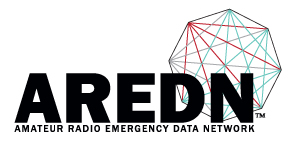I am here at the Southern California Linux Expo (SCALE 22x). I AREDN has a booth here. This prompted me to check out the nodes around my location, and possibly put one up. I'm looking at the hardware list and saw some of the gl.inet routers on there, also some microtik devices. However one row away from the AREDN booth was the Software Conservancy, and they had on display the Openwrt One router. I got into reading about the nodes and what AREDN uses and it appears a lot of the hardware is repurposed that uses openwrt. Are there plans to support this router? Right now it looks like the hardware that is supported are close to end of life. A few devices that I looked up are no longer available.
Router announcment is here:
https://sfconservancy.org/activities/openwrt-one.html
It's 1GB ddr4 ram, Mediatek SoC, 2 flash memories to prevent from bricking, m.2 slot for ssd, can be POE powered.
A lot of hardware for the money, and it's initial price is $89.
I just ordered one.
I found a good hardware review on Matt Brown's YT channel. He goes through everything on this device.
https://www.youtube.com/watch?v=JHEQYQPIlQo
Thanks,
Mark Wolfe
N7YMW
Router announcment is here:
https://sfconservancy.org/activities/openwrt-one.html
It's 1GB ddr4 ram, Mediatek SoC, 2 flash memories to prevent from bricking, m.2 slot for ssd, can be POE powered.
A lot of hardware for the money, and it's initial price is $89.
I just ordered one.
I found a good hardware review on Matt Brown's YT channel. He goes through everything on this device.
https://www.youtube.com/watch?v=JHEQYQPIlQo
Thanks,
Mark Wolfe
N7YMW

You may have chosen an indoor device that is not supported by AREDN.
Ooopps, it is supported by AREDN.
Apologies to Mark et alia.
I received mine today via USPS.
I have loaded AREDN Nightly 20250331 on it and placed it in my home network.
73, Chuck
The hardware for this device is superior to the hAP-ac2 the hAP-ac2 is also an "indoor" device.
NVME, dual boot devices, fail safe super hard to brick. Not approaching end of life. Very well supported by OpenWRT.
The question is can the mediatek chipset be moved into the amateur band.
Not my project and entirely TBD, but I wouldn't write it off.
When OpenWrt gifted AREDN two boxes at SCALE several weeks ago indicated they'd be very open to feedback on what would make it better for AREDN. Port count will be one of several items on our input.
Orv W6BI
I think there is a PCIe lane count restriction which makes this difficult in hardware. The N305 box I had at SCaLE has a similar issue - it used up a lot of the CPU's 9 lanes on the four NICs, so I only get one m.2 slot and a mini PCIe slot for expansion.
1 This device running AREDN is a possible option for routing and tunnel heavy loads indoors. It does not have to have a radio chip capable of the entire VLAN1 range to be useful as a router.
2 This device doesn't have enough ports, but can it be configured to bridge to another managed switch to make it work?
3 What's interesting to me about this is that it appears we are running into what I would call an "indoors only, non AREDN rf capable router" choice. The existing ac2 and ac3 are an upgrade from the ac lite. This has more memory but what would you do with it? The choice is between something like this possible new router, and installing the X86 firmware on a VM. If you go down the VM route you can get a huge amount of memory, hard drive space, and in other VMs or containers put actual services in both Windows and Linux versions. We're building now a VM machine for deployment that has Windows available to run a RMS Relay gateway and the other services hosted will be Linux based in various VMs or containers. The machine will have 16gb memory, 12 cores (I think), 2tb of memory ... etc. We will pair it with a switch to get more ports.
AREDN used to be content with the routers built into the outdoor devices, but as the complexity grows for routing this role seems to be moving to indoors type devices. As I can buy a mini PC with a Win11 license and some reasonable specs for less than $200 ... I'm seeing two paths here to accomplish the same upgraded capacity. One is just a router, but the other can be both a router and a VM host.
Anything I'm missing here? Ed
I think where the OpenWRT one comes into play is as a simpler higher performance option for end users or orgs who are not comfortable or familiar with virtualization. It seems simple once you've done it if you already have the technical wherewithal, but one of the original goals of AREDN was to simplify networking and self-hosting to make it more accessible. Having a higher performance option which can be "flashed and stashed," the same as existing hardware nodes, is a good addition to the menagerie in my opinion.
You also don't need to bridge it to add more ports with switching. You can just configure the requisite VLANs on the switch to pass traffic over layer 2. This adds functionally unlimited ports from only one connection to AREDN.
What you're suggesting could be good. The device might be worth looking at, just saying there are many ways to skin the same cat.
Ed
Me, too.
A week ago I tried to replace my home router (tower PC) with a 2xLAN miniPC
(3.5x3.5x1.5 inches).
The LAN port would get deaf or dumb after a few hours.
I tried rebooting 3 times and it would eventually fail.
I have a 4xLAN miniPC arriving in a few days and I will try to use it to replace
my home router.
\/
/\ fingers crost.
3s, Chuck